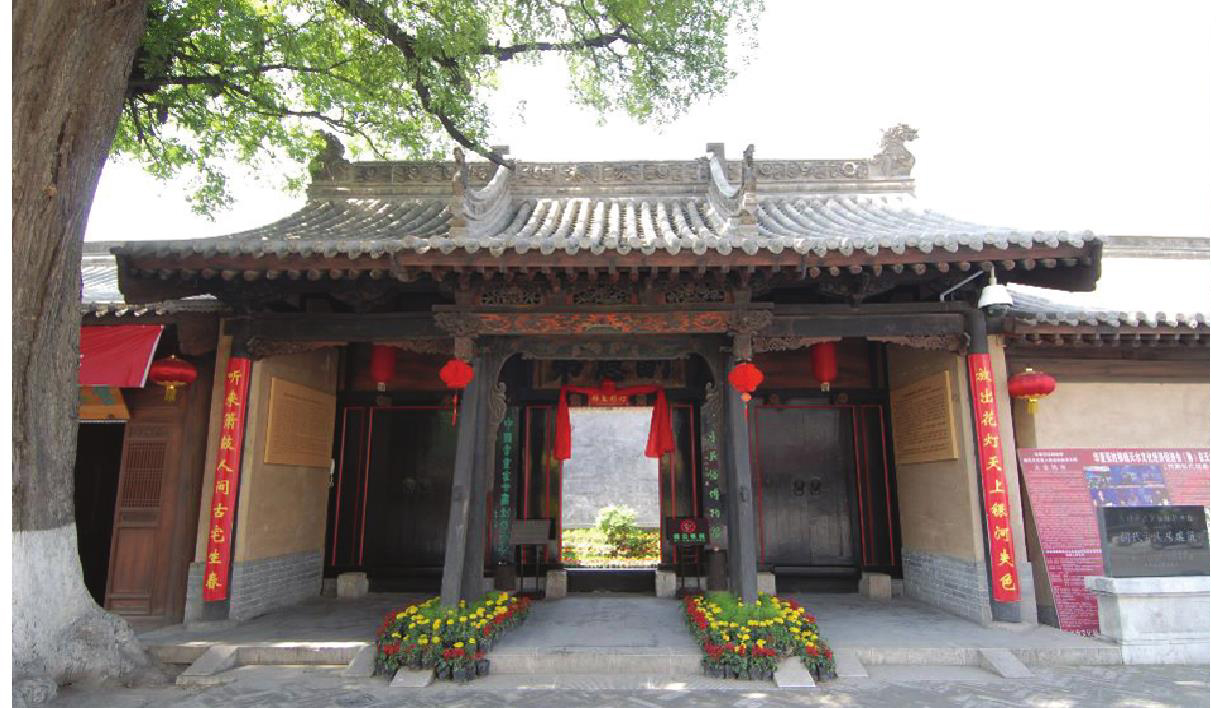南宅子
明代建筑。国家重点文物保护单位。位于秦州区民主路。创建年代约在明嘉靖与隆庆年间,为明代中宪大夫、山西按察副使胡来缙私宅。坐南朝北,平面略呈矩形。庭院北角有硬山顶大门 3 间,额榜书“副宪第”3 字,为明人手迹。大门当心间前面改作“胡松秀之妻蒲氏”的节孝坊。门前有一株明代古槐,浓荫覆地,故当地人又称南宅子为“大槐树下”。大门内有一小天井,南设照壁,东西各辟一垂花小门,东门已圮,西门尚存,额题“桂馥”。门内是四合前院,东西厢房为清代建筑,南正庭 5 间是明代建筑,单檐悬山顶,直棂隔扇,哺龙脊饰。北面 5 间倒座。沿正厅廊前迤东小门可入书房四合小院。自照壁东向南穿一迂回曲折小径入西进垂花小门,进三合后院,院中南三间悬山顶五架椽前出附阶正房为明代建筑,制作古朴。整组建筑布局严谨,曲回幽静,为甘肃省内现存明代庭院建筑的杰出代表。

南宅子大门
南宅子
位于天水市秦城区民主路。创建年代约在明嘉靖与隆庆年间,为明代中宪大夫、山西按察副使胡来缙私宅。座北朝南,平面略呈矩形。庭院东北角有硬山顶大门3间,额榜书 “副宪第”3字,为明人手迹。大门当心间前面改作 “胡松秀之妻蒲氏”的节孝坊。门前有一株明代古槐,浓荫覆地,故当地人又称南宅子为“大槐树下”。大门内有一小天井,南设照壁,东西各辟一垂花小门,东门已圮,西门尚存,额题 “桂馥”。门内是四合前院,东西厢房为清代建筑,南正庭5间是明代建筑,单檐悬山顶,直棂隔扇,哺龙脊饰。北面5间倒座。沿正厅廊前迤东小门可入书房四合小院。自照壁东向南穿一迂回曲折小径人西进垂花小门,进三合后院,院中南三间悬山顶五架椽前出附阶正房为明代建筑,制作古朴。整组建筑布局严谨,曲回幽静,是甘肃省内现存明代庭院建筑的杰出代表。为省级文物保护单位。